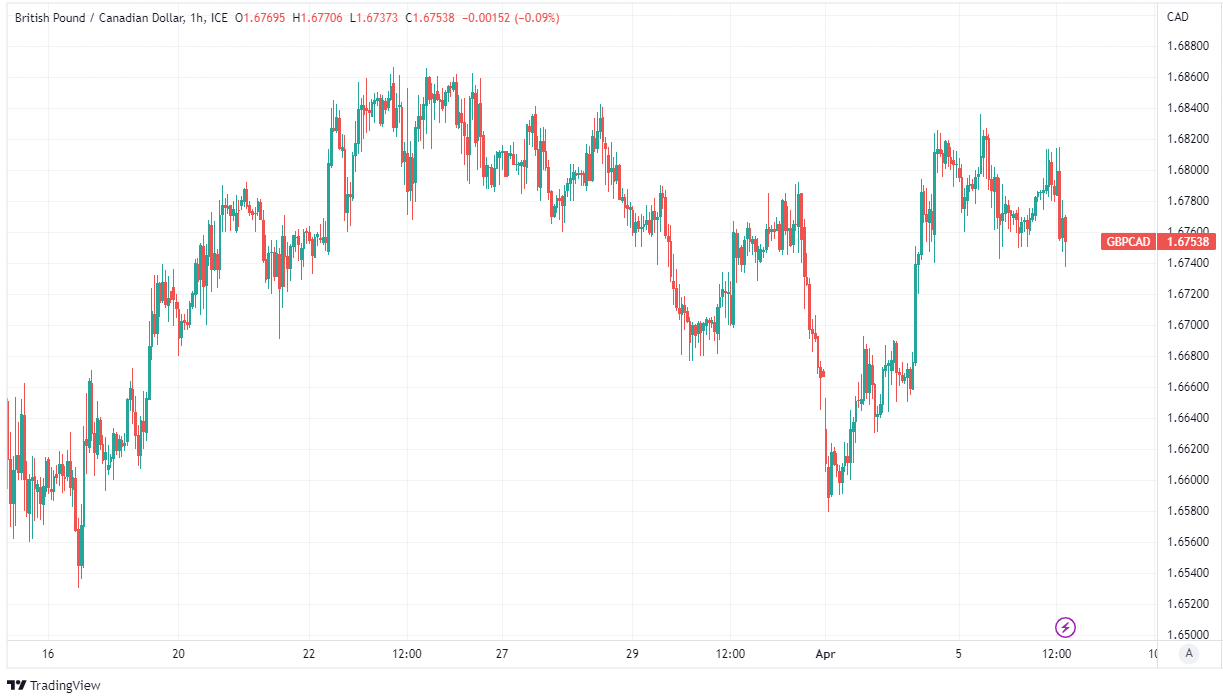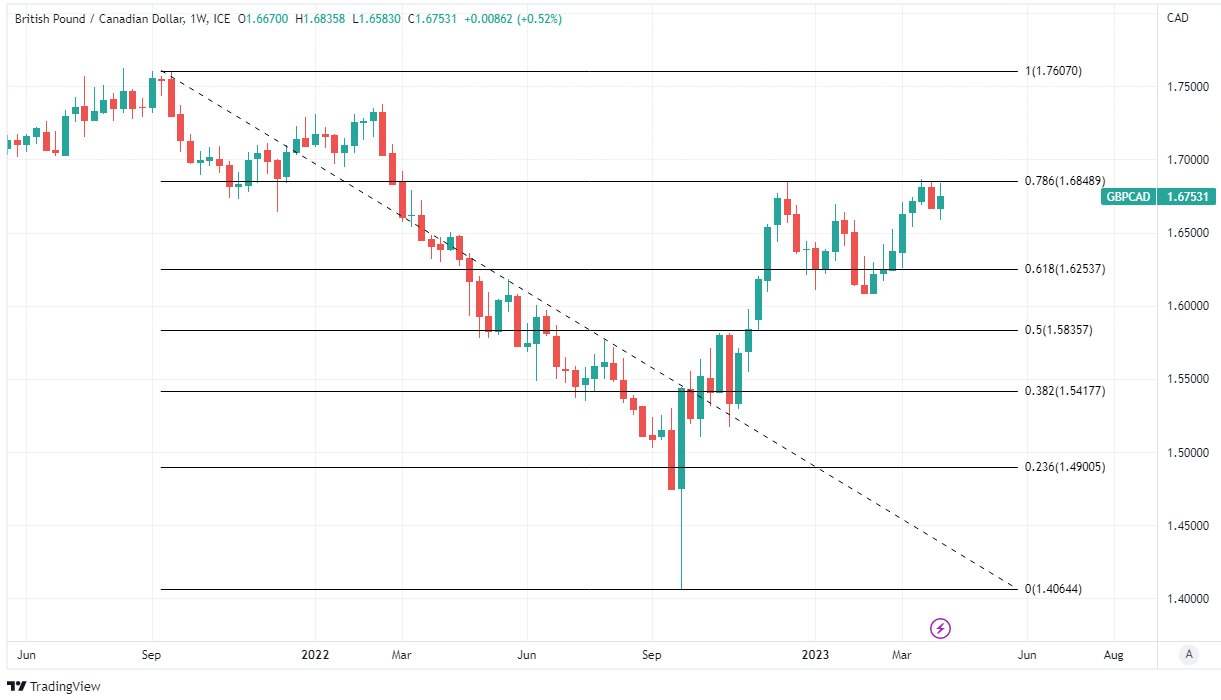Canadian Dollar Supported by Strong Jobs Report
"Even with the softening in short-term inflation expectations, most businesses still think inflation will stay well above the Bank of Canada’s 2% target until at least 2025" - BoC.

Image © Adobe Stock
The Pound to Canadian Dollar exchange rate slipped further from the week's highs ahead of a long Easter weekend after a robust employment report helped the Loonie to better resist a rebounding U.S. Dollar and to notch up gains over other currencies along the way.
Sterling lost a tenuous grip on the 1.68 handle against the Loonie on Thursday after Statistics Canada data suggested employment rose at an accelerated pace in March with around 35,000 finding their way into full or part-time work, up from 21,800 previously.
March employment gains surpassed an economist consenus of 10,200 and were announced just as the U.S. Department of Labor revealed an increase in the number of unemployment-related welfare claims for last week and upward revisions to earlier numbers.
"The still low unemployment rate and strong wage growth will likely see policymakers maintaining a bias towards further hikes, rather than hinting at the cuts markets have been pricing in," says Andrew Grantham, an economist at CIBC Capital Markets, in reference to the Canadian data.
Canadian pay pressures moderated in March with average hourly wage growth ticking down to 5.3% from 5.4% previously while still persisting at levels likely to alarm the Bank of Canada (BoC) ahead of next Wednesday's interest rate decision.
 Above: Pound to Canadian Dollar rate shown at hourly intervals. Click image for closer inspection.
Above: Pound to Canadian Dollar rate shown at hourly intervals. Click image for closer inspection.
Economists almost unanimously tip Canada's cash rate to be left unchanged at 4.5% next week and the BoC did say in January that it intended to keep borrowing costs steady while assessing the economic impact of last year's 425 basis point or 4.25% increase.
"Early cracks have been forming under the surface - even as hiring has remained very strong, job openings have been edging lower and the BoC's Q1 Business Outlook Survey showed the intensity of labour shortages easing," says Nathan Janzen, deputy chief economist at Royal Bank of Canada.
"The labour market itself is a lagging economic indicator and headwinds from aggressive central bank interest rate hikes over the last year continue to build," Janzen writes in review of the data.
Official figures have cast Canada's economy in a resilient light since January with GDP more than reversing its December's contraction once into the new year while retail sales values rise strongly in February when also more-than reversing the decline seen in January.
But its inflation that matters most to the Bank of Canada and while annual price growth fell back to 5.2% in February, from 5.9% in January, it's not yet clear how long it will take to return to the 2% target or whether it's falling fast enough to keep the BoC from raising interest rates again.
Uncertainty about the outlook for inflation and interest rates has risen since Monday when the BoC's Business Outlook Survey suggested companies expect inflation to remain above the two percent target until 2025, which is later than the bank's forecast for a return to the target in 2024.
 Above: GBP/CAD at weekly intervals with Fibonacci retracements of September 2021 downtrend indicating possible technical resistances. (To optimise the timing of international payments you could consider setting a free FX rate alert here.)
Above: GBP/CAD at weekly intervals with Fibonacci retracements of September 2021 downtrend indicating possible technical resistances. (To optimise the timing of international payments you could consider setting a free FX rate alert here.)
"Even with the softening in short-term inflation expectations, most businesses still think inflation will stay well above the Bank of Canada’s 2% target until at least 2025. Of the firms that expect inflation to be back to 2% before 2025, many think the return will be the result of monetary policy actions the Bank has taken over the past 12 months," the BoC said in its first quarter Business Outlook Survey on Monday.
"Consumers see many obstacles to the Bank reaching its inflation target. Supply chain disruptions remain the most common factor mentioned, although most consumers think these disruptions will be resolved in the next two years. Many also think that high government spending, including spending following the outbreak of the COVID-19 pandemic, may affect the Bank’s ability to get inflation to target for three years or more. Some consumers believe the impact of the war in Ukraine and increased profits for businesses, particularly grocery stores, will also be obstacles," the bank also said in the Consumer Expectations Survey released concurrently on Monday.
Central bankers say that expectations for inflation can impact actual price changes in the economy by influencing corporate pricing decisions and wage expectations among workers, which is why the BoC might not necessarily welcome Monday's surveys.
Those surveys and the resilient Canadian economy are two reasons for why the BoC might prefer to keep the cash rate unchanged at its increased level for an extended period up ahead.
Any such policy stance is potentially an upside risk for the Canadian Dollar and a headwind for GBP/CAD because it could force interest rate derivative markets to reconsider earlier and ongoing bets on the BoC cutting its cash rate before year-end.
